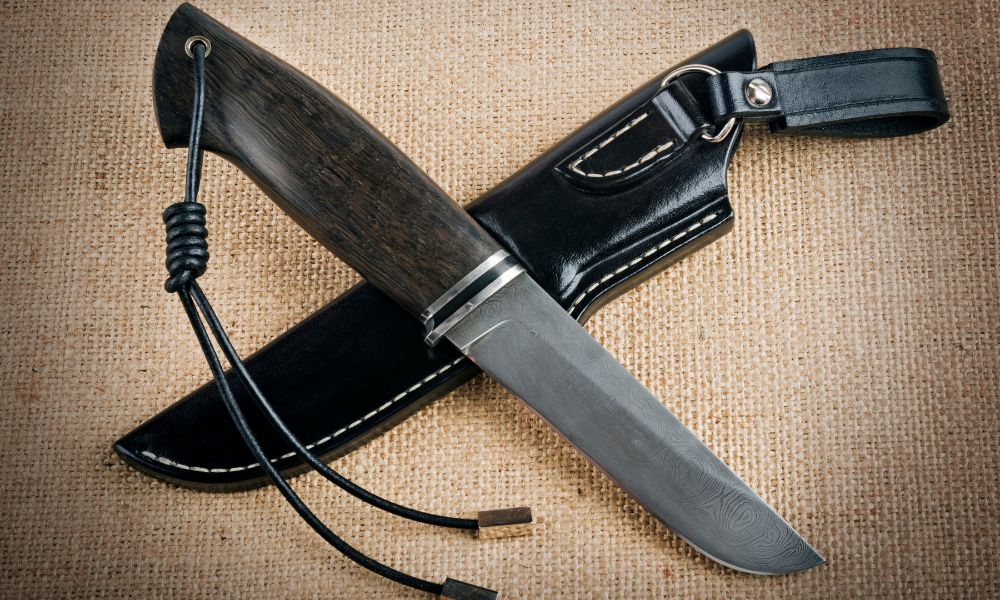In the culinary world, a knife is more than just a tool; it’s an extension of the chef’s hand, enabling precision, efficiency, and creativity in the kitchen.
However, with the myriad of options available, choosing the right knife can be overwhelming. Fear not, for we’ve crafted a comprehensive guide to help you navigate the world of cutlery and select the perfect knives for your culinary endeavors.
Start with the Basics: Understanding Knife Types
When it comes to selecting the perfect knife, it all begins with understanding the different types available. Each knife type is designed with specific purposes and functionalities in mind, catering to various culinary tasks.
The versatile chef’s knife, for example, is a kitchen workhorse suitable for chopping, slicing, and dicing a wide range of ingredients. On the other hand, the nimble paring knife excels at intricate tasks such as peeling fruits and vegetables or deveining shrimp.
Other essential knife types include the sturdy serrated knife, ideal for slicing bread without crushing it, and the precise utility knife, perfect for smaller cutting jobs. By familiarizing yourself with the characteristics and uses of each knife type, you’ll be better equipped to assemble a well-rounded collection that meets your cooking needs.
The Importance of Blade Materials

The importance of blade materials cannot be overstated when it comes to choosing the perfect knife. The material of the blade directly influences its performance, durability, and maintenance requirements.
Stainless steel, renowned for its corrosion resistance and ease of maintenance, is a popular choice for its versatility in various kitchen tasks. On the other hand, carbon steel offers unparalleled sharpness and edge retention, making it favored among professional chefs for precision cutting.
High-carbon stainless steel combines the best of both worlds, offering the durability of stainless steel with the superior sharpness of carbon steel.
Understanding the characteristics of different blade materials allows you to select a knife that aligns with your cooking style and preferences, ensuring an enjoyable and efficient culinary experience for years to come.
Considering Knife Handles

When considering knife handles, it’s essential to prioritize comfort and control. The handle is the connection point between you and the blade, influencing your ability to maneuver and use the knife effectively.
Traditional wooden handles offer a classic aesthetic and natural grip, while modern synthetic materials like plastic or composite offer durability and easy maintenance. Additionally, ergonomic designs can alleviate hand fatigue during prolonged use.
Ultimately, the best handle material is one that feels comfortable in your hand and provides a secure grip, allowing you to wield your knife with confidence and precision.
Determining Blade Length
Determining the blade length of a knife is a critical consideration that directly impacts its versatility and usability in the kitchen. Generally, shorter blades, such as those found on paring knives, offer enhanced precision and control for delicate tasks like peeling and intricate cutting.
On the other hand, longer blades, like those of chef’s knives, provide greater surface area and leverage, making them ideal for chopping, slicing, and dicing larger ingredients with ease. When selecting a knife, consider the types of tasks you frequently perform in the kitchen and choose a blade length that aligns with your cooking style and comfort preferences.
Whether you opt for a compact utility knife or a substantial chef’s knife, finding the right balance of size and functionality ensures you have the perfect tool for every culinary challenge.
Essential Knives for Every Kitchen

When it comes to stocking your kitchen with essential knives, several must-have options can handle a variety of tasks with ease. First and foremost is the versatile chef’s knife, a workhorse capable of slicing, dicing, and chopping fruits, vegetables, meats, and more.
Next, a paring knife proves invaluable for intricate tasks such as peeling, trimming, and slicing smaller produce. For precision slicing and boning, a utility knife or boning knife is indispensable. Additionally, a serrated bread knife ensures clean, effortless cuts through bread loaves and delicate pastries.
Rounding out the selection, a sturdy carving knife is perfect for slicing roasts, poultry, and other large cuts of meat, while a versatile santoku knife excels at both chopping and slicing tasks. With these essential knives in your arsenal, you’ll be well-equipped to tackle any culinary challenge that comes your way.
Preserving Your Investment
Preserving your investment in quality knives requires consistent care and maintenance. Regular sharpening is essential to maintain a sharp edge, ensuring effortless cutting and reducing the risk of accidents. Invest in a high-quality knife sharpener or hone to keep your blades in top condition.
Additionally, proper storage is crucial to prevent damage to the blades and ensure safety in the kitchen. Consider using a knife block, magnetic strip, or blade guards to protect your knives when not in use. Avoid storing knives loose in drawers, as they can become dull or damaged when they rub against other utensils.
By incorporating these simple yet effective practices into your routine, you’ll prolong the lifespan of your knives and continue to enjoy their peak performance for years to come.
Conclusion
In conclusion, selecting the ideal knife for your kitchen arsenal is a crucial decision that can greatly enhance your culinary experience.
By considering factors such as blade material, handle design, and intended use, you can ensure that each knife in your collection serves its purpose with precision and efficiency. With the guidance provided in this article, you’re equipped with the knowledge to confidently choose from the 10 must-have blades for every kitchen enthusiast. Whether you’re a seasoned chef or an amateur cook, investing in high-quality knives tailored to your needs will undoubtedly elevate your cooking skills and make meal preparation a joyous experience.
